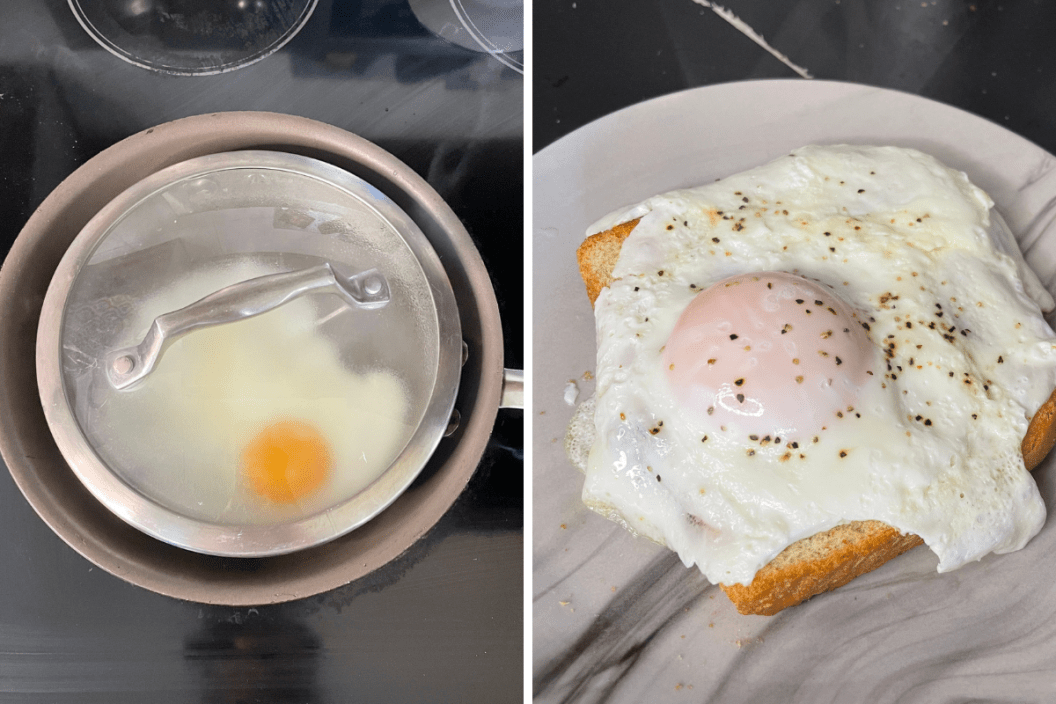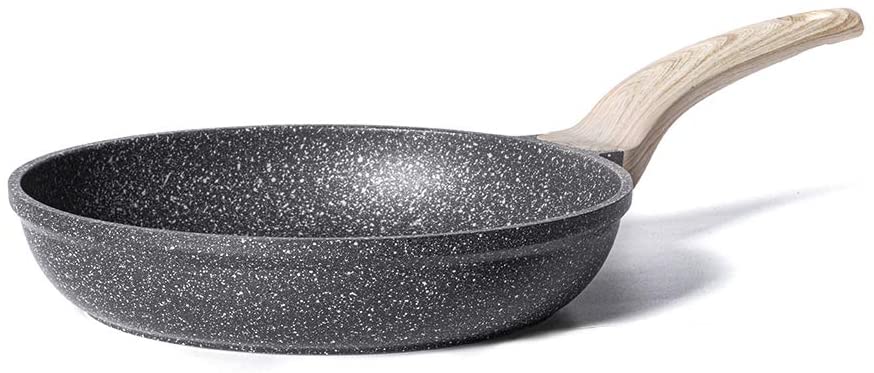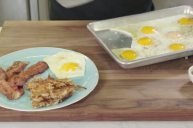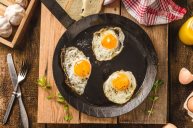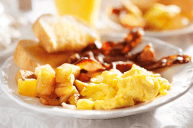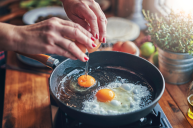If I could only cook my eggs one way for the rest of my life, I would vote basted eggs with no contest. I can't remember the first time I made them (perhaps culinary school when I was learning 101 ways to cook eggs or that time I worked the breakfast line at a retirement home). All I know is no egg recipe comes close to steam-basted eggs and how perfect they come out of the pan every single time. Take a hike sunny side or over-easy eggs, basted eggs are by far my favorite way to cook eggs.
Videos by Wide Open Country
What Does Basting an Egg Mean?
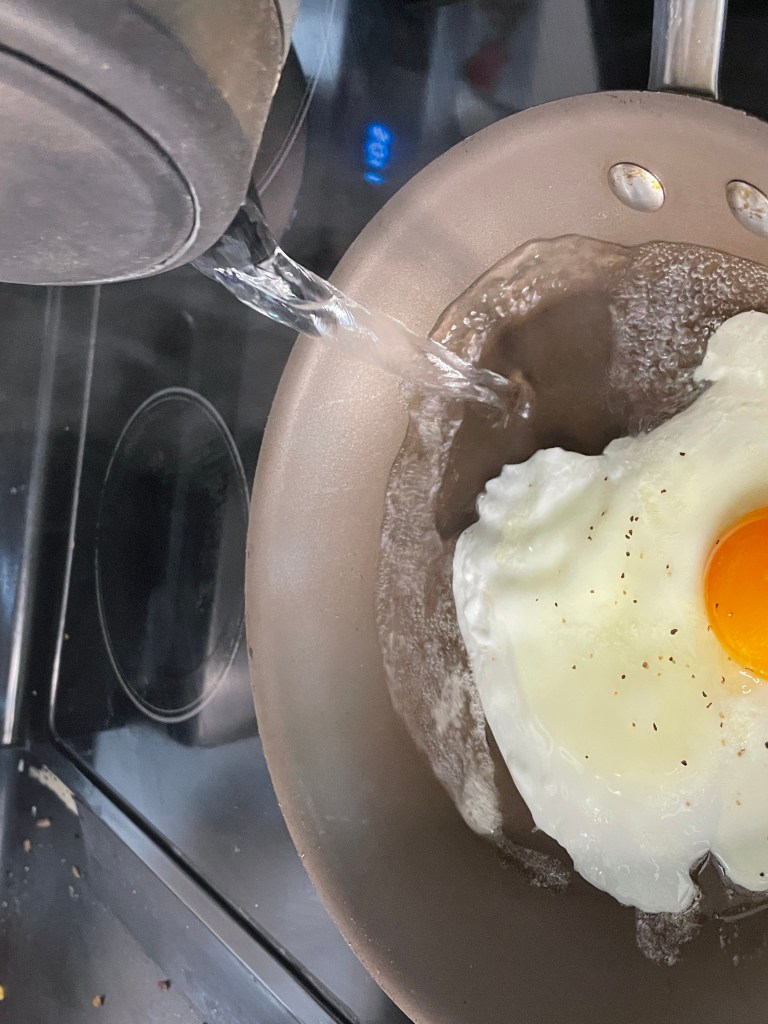
Lyndsay Cordell
Basting, at its core, is a cooking technique that cooks an item in either its own juices or sauce. Have you ever seen fancy chefs spooning butter on a steak while it cooks in a pan? That's called basting! It's usually used to add flavor and keep the food moist.
When it comes to basting eggs, the "basting" comes in the form of steam trapped underneath a glass lid. The steam collects and cooks the top of the egg while the bottom of the egg is cooked by the bottom of the pan. The doneness of the egg yolk is completely up to the cook.
What's The Difference Between Basted and Poached Eggs?
Poached eggs, which are used for dishes such as Eggs Benedict, may seem like the same concept of basted eggs, however, both techniques are quite different. Basted eggs start with hot fat (either melted butter or olive oil) in a nonstick skillet over medium heat. The egg is added, then a small amount of hot water is added to the pan along with a lid.
Poaching, on the other hand, uses only water for the eggs to cook. A brunch staple, eggs are cooked in gently boiling water until the egg whites are set.
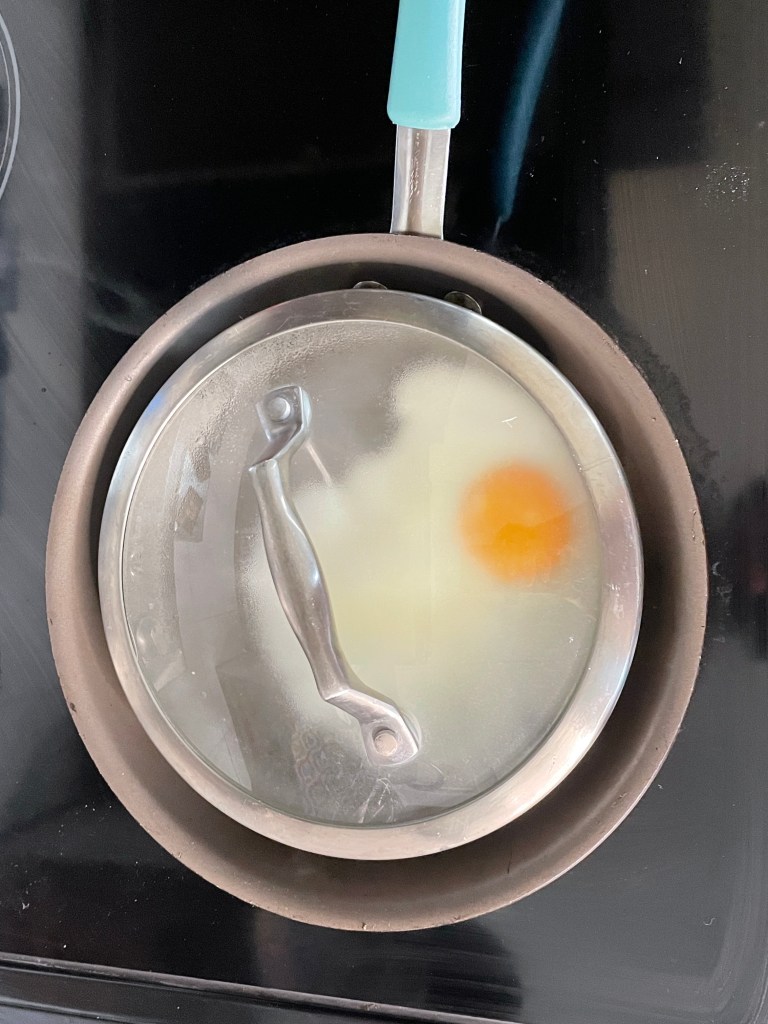
Lyndsay Cordell
While poached eggs are beautiful and silky, they get a bad rap because of their difficulty. You must crack eggs into a bowl first to prevent them from breaking, make a tornado with your spoon in the boiling water, then gently remove the eggs all without breaking them or overcooking them. Half of the egg white whips off and the pot is a mess by the end of it.
Personally, I don't see the benefit of it, so I stick with basted eggs.
Why a Non-Stick Pan?
Eggs are sticky little things! Prevent a breakfast breakdown by using the proper cookware when preparing your basted eggs. This eco-friendly non-stick skillet is small, making it perfect for eggs.
CAROTE 8 Inch Nonstick Skillet
How To Make Basted Eggs Step-by-Step
Start with your favorite non-stick skillet and butter that sucker up. Set the heat to medium and wait for the butter to melt.
Once melted, break a large egg into the middle of the pan and season with kosher salt and black pepper. If you really want to be fancy use white pepper.
When the whites are starting to set, add 1 tablespoon of water to the pan. I like to use hot water from the tap or from my tea kettle. Immediately add a lid (or a plate or aluminum foil) and cook until the whites are completely set and the top of the egg yolk is almost opaque in color.
Remove from the heat and use a spatula to remove the egg from the pan. Serve with toast and your favorite hot sauce.
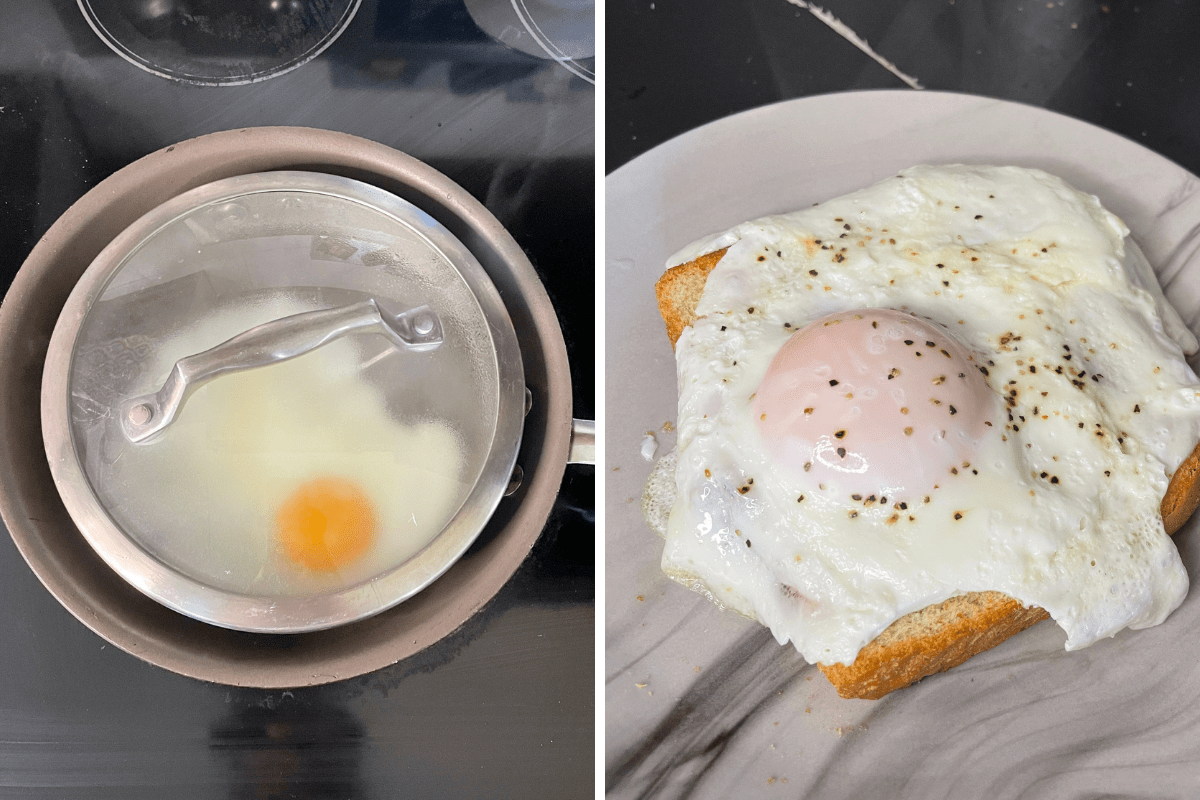
Basted Eggs Are The Easiest Way to Fry Eggs
Ingredients
- 1 egg
- 1 tsp butter
Instructions
- Using a non-stick pan, heat the stove on medium and add butter or oil to the pan.
- Once melted, break a large egg into the middle of the pan and season with kosher salt and black pepper.
- When the whites are starting to set, add 1 tablespoon of water to the pan. Immediately add a lid and cook until the whites are completely set and the top of the egg yolk is almost opaque in color.
- Remove from the heat and use a spatula to remove the egg from the pan.
